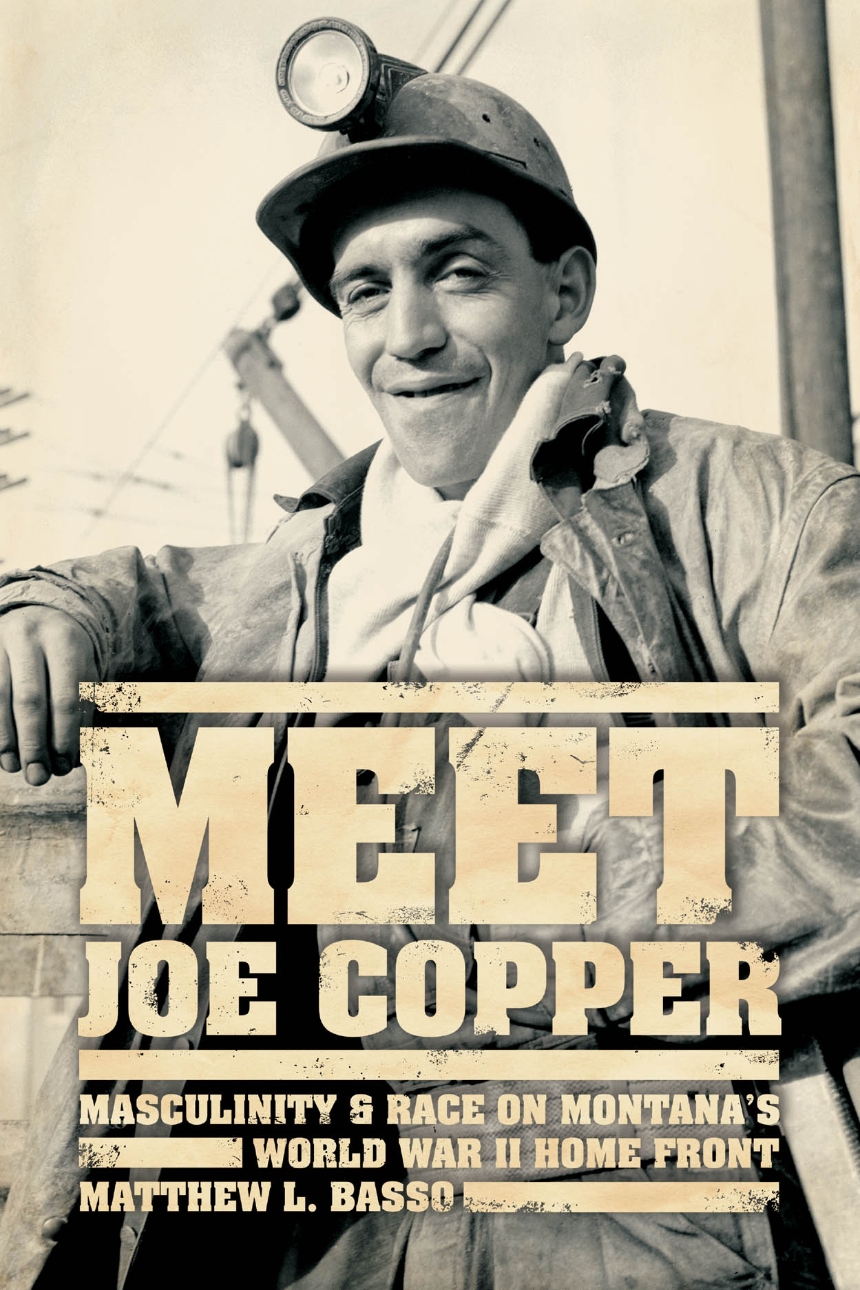Meet Joe Copper
Masculinity and Race on Montana’s World War II Home Front
9780226044194
9780226038865
9780226044224
Meet Joe Copper
Masculinity and Race on Montana’s World War II Home Front
“I realize that I am a soldier of production whose duties are as important in this war as those of the man behind the gun.” So began the pledge that many home front men took at the outset of World War II when they went to work in the factories, fields, and mines while their compatriots fought in the battlefields of Europe and on the bloody beaches of the Pacific. The male experience of working and living in wartime America is rarely examined, but the story of men like these provides a crucial counter-narrative to the national story of Rosie the Riveter and GI Joe that dominates scholarly and popular discussions of World War II.
In Meet Joe Copper, Matthew L. Basso describes the formation of a powerful, white, working-class masculine ideology in the decades prior to the war, and shows how it thrived—on the job, in the community, and through union politics. Basso recalls for us the practices and beliefs of the first- and second-generation immigrant copper workers of Montana while advancing the historical conversation on gender, class, and the formation of a white ethnic racial identity. Meet Joe Copper provides a context for our ideas of postwar masculinity and whiteness and finally returns the men of the home front to our reckoning of the Greatest Generation and the New Deal era.
360 pages | 29 halftones, 1 line drawing | 6 x 9 | © 2013
History: American History
Sociology: Occupations, Professions, Work, Race, Ethnic, and Minority Relations
Reviews
Table of Contents
List of Illustrations
Acknowledgments
Acknowledgments
INTRODUCTION / GI Joe and Rosie the Riveter, Meet Joe Copper!
PART I: WHITE LABOR, 1882–1940
ONE / Butte: “Only White Men and Dagoes”
TWO / Black Eagle: Immigrants’ Bond
THREE / Anaconda: “Husky Smeltermen” and “Company Boys”
PART II: COPPER MEN AND THE CHALLENGES OF THE EARLY WAR HOME FRONT
FOUR / Redrafting Masculinity: Breadwinners, Shirkers, or “Soldiers of Production”
FIVE / The Emerging Labor Shortage: Independent Masculinity, Patriotic Demands, and the Threat of New Workers
PART III: MAKING THE HOME FRONT SOCIAL ORDER
SIX / Butte, 1942: White Men, Black Soldier-Miners, and the Limits of Popular Front Interracialism
SEVEN / Black Eagle, 1943: Home Front Servicemen, Women Workers, and the Maintenance of Immigrant Masculinity
EIGHT / Anaconda, 1944: White Women, Men of Color, and Cross-Class White Male Solidarity
CONCLUSION / The Man in the Blue-Collar Shirt: The Working Class and Postwar Masculinity
List of Abbreviations
Notes
Index
Awards
Pacific Coast Branch of the American Historical Association: Pacific Coast Branch Book Award
Won
Cornell Univiversity ILR and Labor and Working Class Historical Association: Philip Taft Labor History Award
Won
